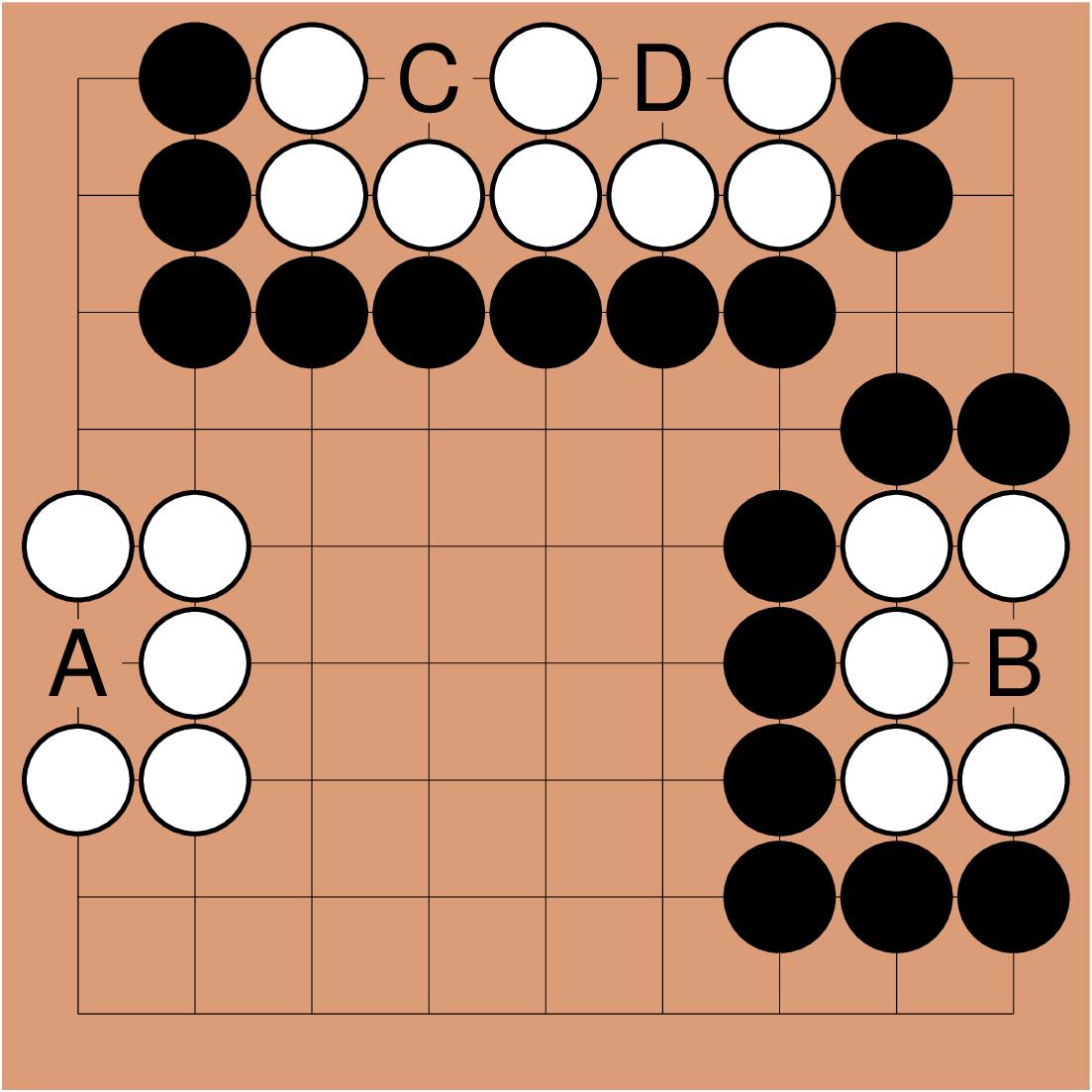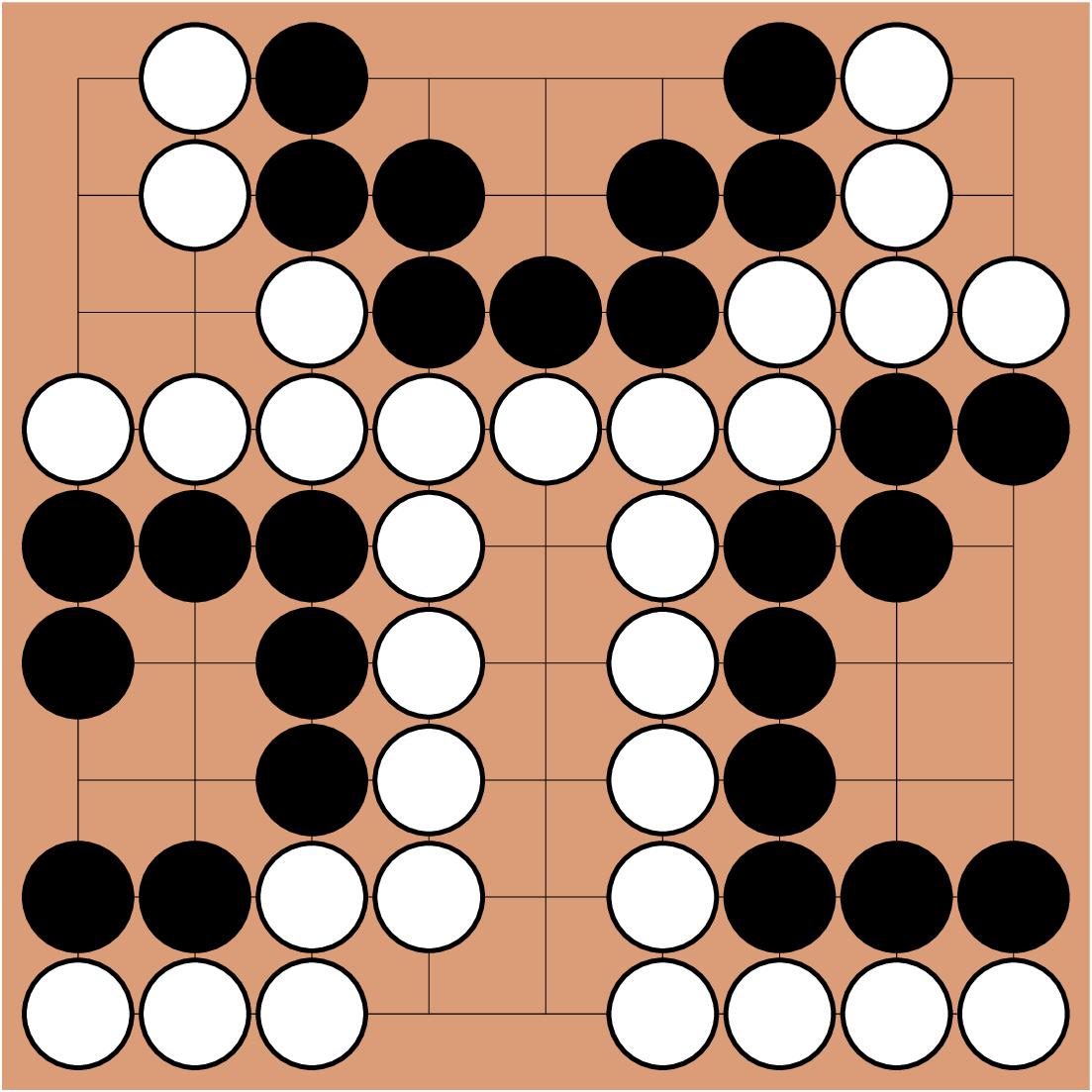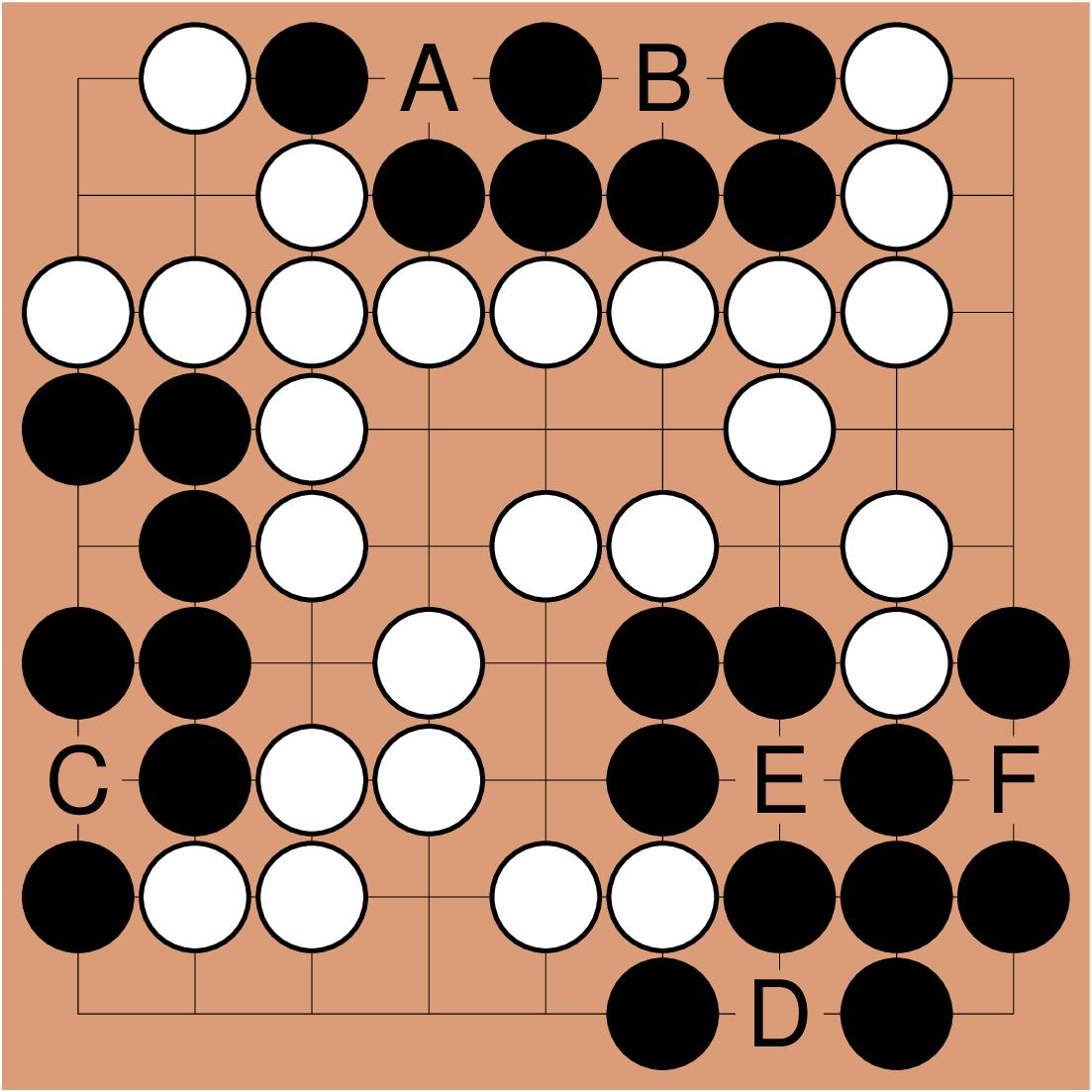Even though you can start playing Go without the knowledge about the eyes’ concept, the understanding of eyes will definitely help you understand more about what’s going on in Go matches in general.
But before reading about eyes in Go, have you already checked our beginner’s tutorial about how to play Go?
How to make life in Go?
When a player surrounded a part of the board, it might become their territory. However, the opponent can still put a stone in that area. If a player wants to protect their territory, they need to prove the invading stone can be captured.
Here comes one of the most important questions in Go: which stones can survive in opponent’s area and which will get captured? To answer this question, we will need to learn the concept of eyes.
Look at White’s group on the left side of the diagram above. Black cannot put their stone at A because it would have no liberties. It seems A is a liberty of White’s group which cannot be removed! We say that this is a group with one eye.
However, look at White’s group on the right side. It also has one eye. However, it has only one liberty – at B. Can Black play there? Yes, because this move will capture White’s group. After taking it off of the board Black’s stone will have three liberties.
Now let’s look at the group on the upper side. It has two liberties – at C and D. Black cannot put a stone at C because it would have no liberties. Because of the same reason Black cannot play at D. It means that Black won’t ever manage to take liberties of White’s group. It means the group is alive.
The conclusion is that if a group has two eyes, it is alive.
Watch the 1min 50s video summarizing the concept of eyes in Go
Eyes bigger than just one intersection
White’s group on the left side on the diagram above has one eye. Because the group is surrounded, Black can take both of White’s liberties and capture the whole group. White is dead.
Let’s now look at White’s group on the bottom side. Black can play inside the eyes surrounded by White but they won’t ever take away all of White’s liberties. If Black tries to do it, soon they will realize their own stones wouldn’t have any liberties.
If an eye is big enough, a player can already hope that it can be split into two eyes. White’s group on the right side has only one eye so far. However, if White plays at A, they will have two eyes and live.
Go tactics
You can learn how to make two eyes and increase your ability to read moves forward (the core of all Go tactics) by solving so called life and death problems. Solving these problems is one of the most important parts of studying Go and it should be included in each Go player’s schedule, regardless of a player’s level.
The combination of Go strategy and tactics
Even though Go is a strategical game, playing Go combines both – strategy and tactics. A strategy cannot be powerful without a tactical strength. For example, if you want to decrease your opponent’s area, you often face a choice: invasion or reduction. To make a good decision you need to know if it is possible to make two eyes with your invading stone.
Go strategy
The strategies in Go can be learned most efficiently by reviewing your lost games with a Go teacher. Your teacher can explain to you how to play locally, but also how to create a whole game plan.
However, it’s recommended to analyze your games even if you won and even if you don’t have a teacher.
It’s a good practice to review your just finished games with your opponents. This way you might learn some strategies, which you didn’t think about during the games, by analyzing your opponents’ points of view and ideas.
If you can’t review your games with your opponents, you can try to review them simply by yourself. You will not learn from teachers’ or opponents’ ideas, it will take you more time to improve your strategical thinking this way, but you can still come to some conclusions and play your next games better.
Basic life and death problems
On the diagram above we can see some basic life and death problems. Before continuing to read further, try to solve these problems by yourself. Where should Black play to make sure their groups are alive?
Hint: Black needs to make two eyes… or more (of course a group with three eyes will live as well).
The imitation of eyes
The black groups on the diagram above seem to be alive. However, let’s take a closer look. White can put a stone at A because they will capture Black’s stone. With the next move White will be able to play at B and capture the whole group of Black. Black’s group is dead because it has only one real eye. The eye at A is false.
Let’s now look at a group on the left side. At the moment White cannot play at C. However, the eye is false anyway. The important thing is that the Black stones are not connected and in the future White will be able to play from the corner and eventually capture Black’s stone by playing at C.
The example in the bottom right corner is even more surprising. Black’s group seems to have a lot of eyes but in fact D, E and F are all false eyes. Black has only one real eye, so the group is dead.
Watch the 1min 40s video demonstrating false eyes in Go
Eyes without solid connection
When you play Go, you need to beware of false eyes. It doesn’t mean though that you always have to connect all your stones solidly. A task for you is to determine the status of the Black groups on the diagram above. Do they have two eyes?
White might try to falsify eyes of the group in the center. However, when White plays at A, Black will answer at B. If White plays at C, Black will answer at D.
Black will manage to connect their stones when it’s needed. It means that the central group is alive and for now Black doesn’t need any stones at A, B, C and D. However, Black needs to stay alert. If Black lets White play both at A and B, the eye will become false and Black will die.
Two-headed dragon
In the diagram from the previous section the example of the group on the edges of the board is very interesting. Both of Black’s eyes seem to be false. However, in fact White cannot take away any of them.
Black lives because of being connected around the board. Such a situation is called two-headed dragon and is extremely rare. It happens in professional Go players’ games once in a couple of years and always attracts a lot of attention.




